Waterfalls Frozen in Time: The Geothermal Beauty of Eight Travertine Terraces
Around the world are waterfalls that seem frozen in time. Known as travertine terraces, these step-like geological formations are the result of thousands of years of the Earth’s thermal interior interacting with its exterior. Usually this occurs at a hot spring positioned on a slope. When scalding water full of carbon dioxide forms carbonic acid and flows through porous limestone, it dissolves it and carries along calcium carbonate, which is then deposited on the surface as travertine. This type of limestone, which appears blindingly white, was used to build structures around the ancient world including the Colosseum.
Here are eight of the most stunning of these otherworldly travertine terraces.
PAMUKKALE WATER TERRACES
Denizli, Turkey
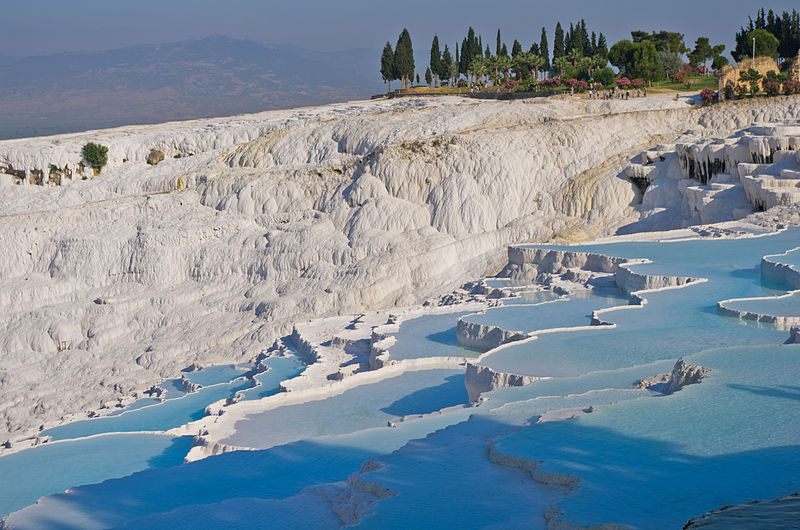 Pamukkale in 2011 (photograph by Antoine Taveneaux/Wikimedia)
Pamukkale in 2011 (photograph by Antoine Taveneaux/Wikimedia)
Near the ancient city of Hierapolis in Turkey, the Pamukkale Water Terraces still have Roman ruins from their long allure as a destination. Recent protection to preserve the area has limited swimming, a move to keep that pristine white-as-snow nature of the surreal terraces.
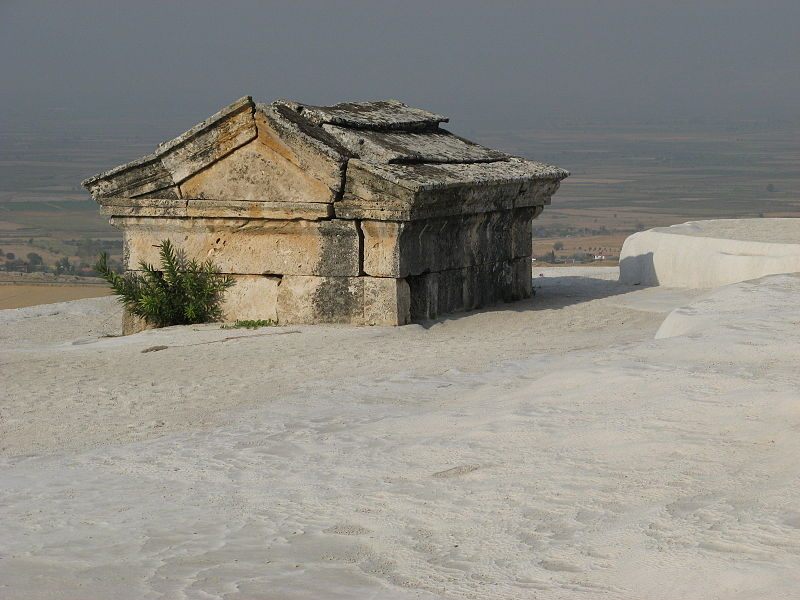
Roman ruins consumed by Pamukkale (photograph by Donar Reiskoffer/Wikimedia)

Pamukkale in 2008 (photograph by Lili ep/Wikimedia)
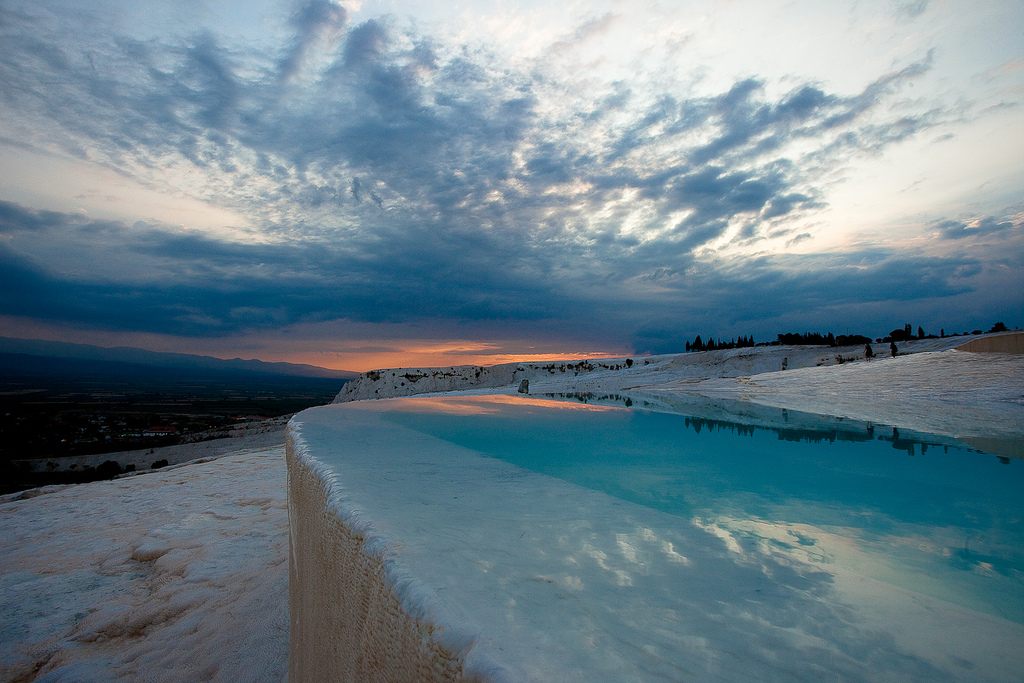 Pamukkale in 2011 (photograph by Esther Lee/Flickr)
Pamukkale in 2011 (photograph by Esther Lee/Flickr)
HUANGLONG TRAVERTINE TERRACES
Aba, China
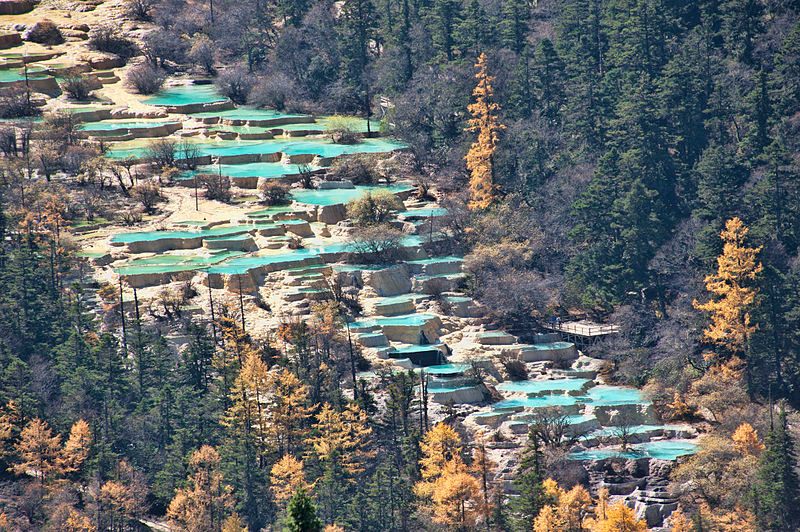 Huanglong Terraces (photograph by chensiyuan/Wikimedia)
Huanglong Terraces (photograph by chensiyuan/Wikimedia)
Known as the “dragon” for their winding shape, the Huanglong Travertine Terraces in southern China flow for 2.2 miles. A temple was built near the source of the hot spring, and with mountains and forests rising on either side, the Huanglong Valley has diverse and dynamic vistas of geological change.
 The Huanglong Terraces & temple in 2009 (photograph by sung ming whang/Flickr)
The Huanglong Terraces & temple in 2009 (photograph by sung ming whang/Flickr)
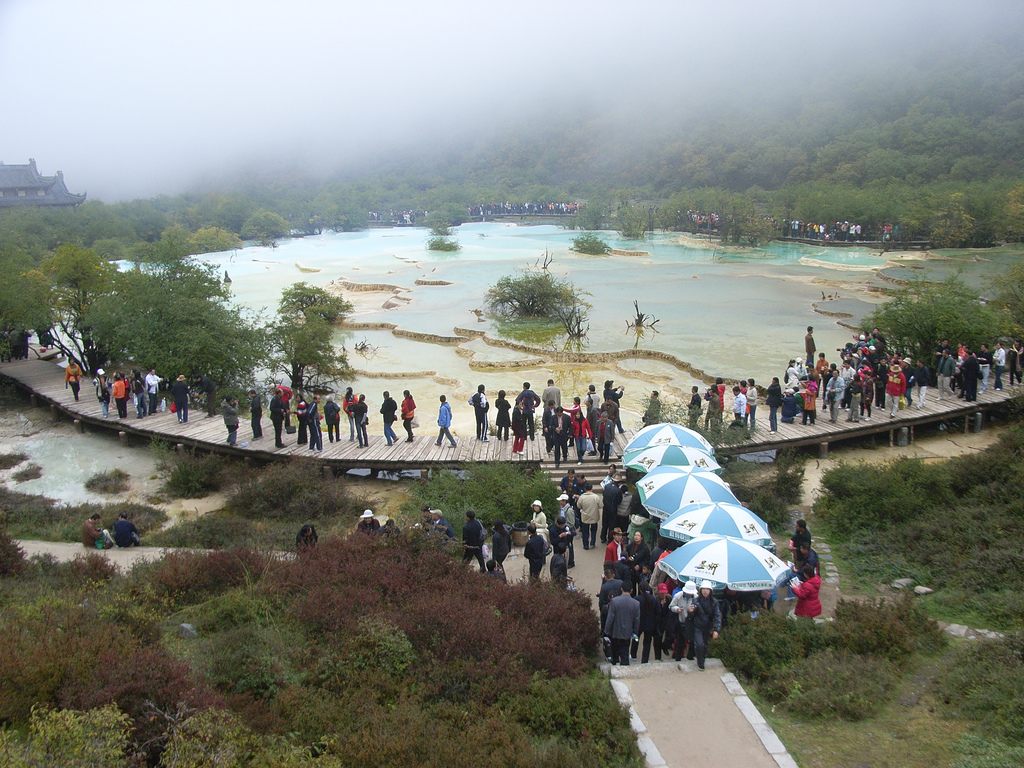 Huanglong Terraces in 2006 (photograph by Toshiyuki IMAI/Flickr)
Huanglong Terraces in 2006 (photograph by Toshiyuki IMAI/Flickr)
MAMMOTH HOT SPRINGS
Yellowstone National Park, Wyoming, United States
 Mammoth Hot Springs in Yellowstone National Park (photograph by Brocken Inaglory/Wikimedia)
Mammoth Hot Springs in Yellowstone National Park (photograph by Brocken Inaglory/Wikimedia)
Perhaps the most famous of travertine terrraces is Mammoth Hot Springs in Wyoming’s Yellowstone National Park. With two tons of calcium carbonate flowing each day, they’re also constantly morphing in shape through the geothermal activity, with the terraces you see one day never exactly the same as the next.
 Boardwalks over Mammoth Hot Springs in 2014 (photograph by Dschwen/Wikimedia)
Boardwalks over Mammoth Hot Springs in 2014 (photograph by Dschwen/Wikimedia)
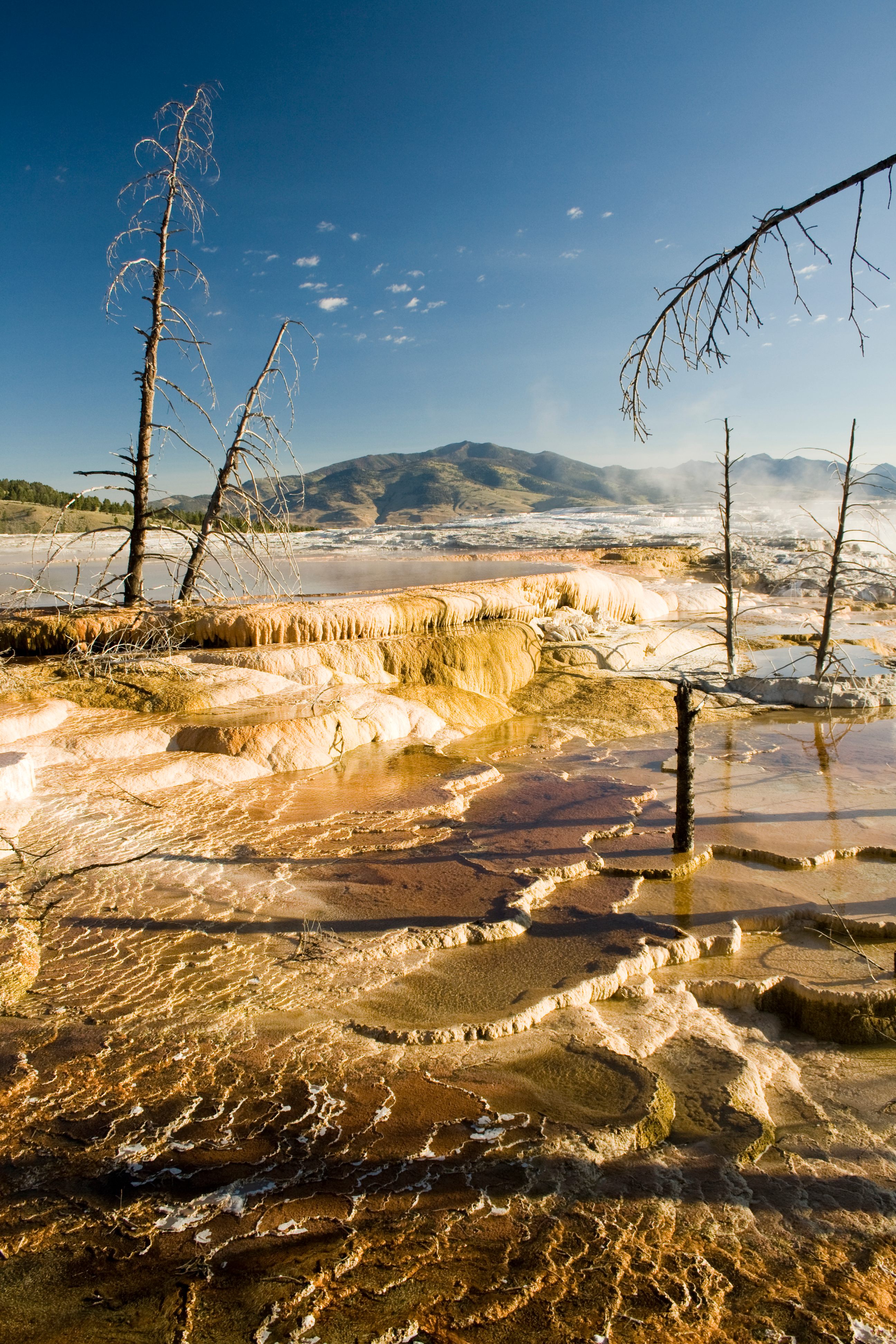 Mammoth Hot Springs in 2010 (photograph by HylgeriaK/Wikimedia)
Mammoth Hot Springs in 2010 (photograph by HylgeriaK/Wikimedia)
BADAB-E SURT
Mazandaran Province, Iran
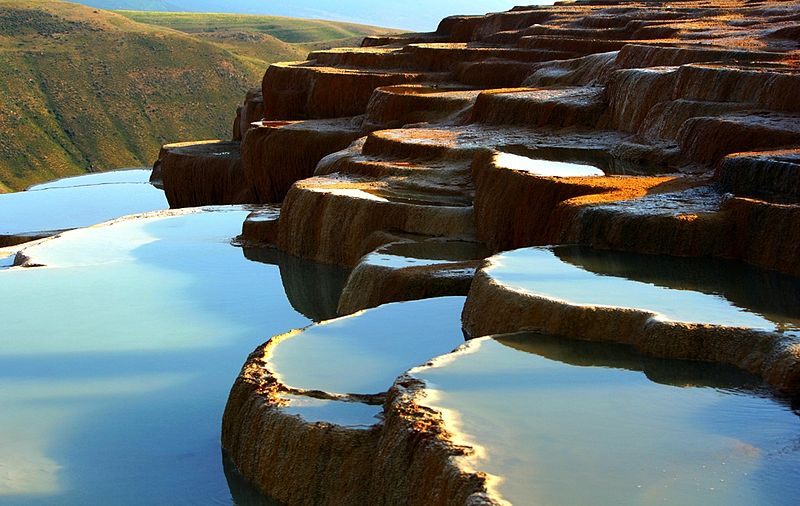 Badab-e Surt in Iran (photograph by Siamaksabet/Wikimedia)
Badab-e Surt in Iran (photograph by Siamaksabet/Wikimedia)
Northern Iran’s Badab-e Surt is formed by two distinct mineral hot springs, one of which tints the terraces a unique orange color from an infusion of iron oxide. The reddish steps also give the waters a sharp contrast as they reflect the sky above like a mirror.
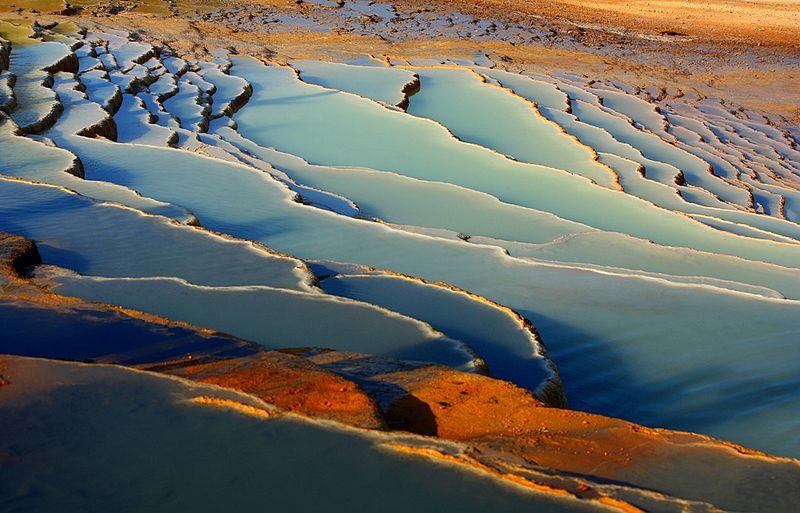 Badab-e Surt in 2012 (photograph by Siamaksabet/Wikimedia)
Badab-e Surt in 2012 (photograph by Siamaksabet/Wikimedia)
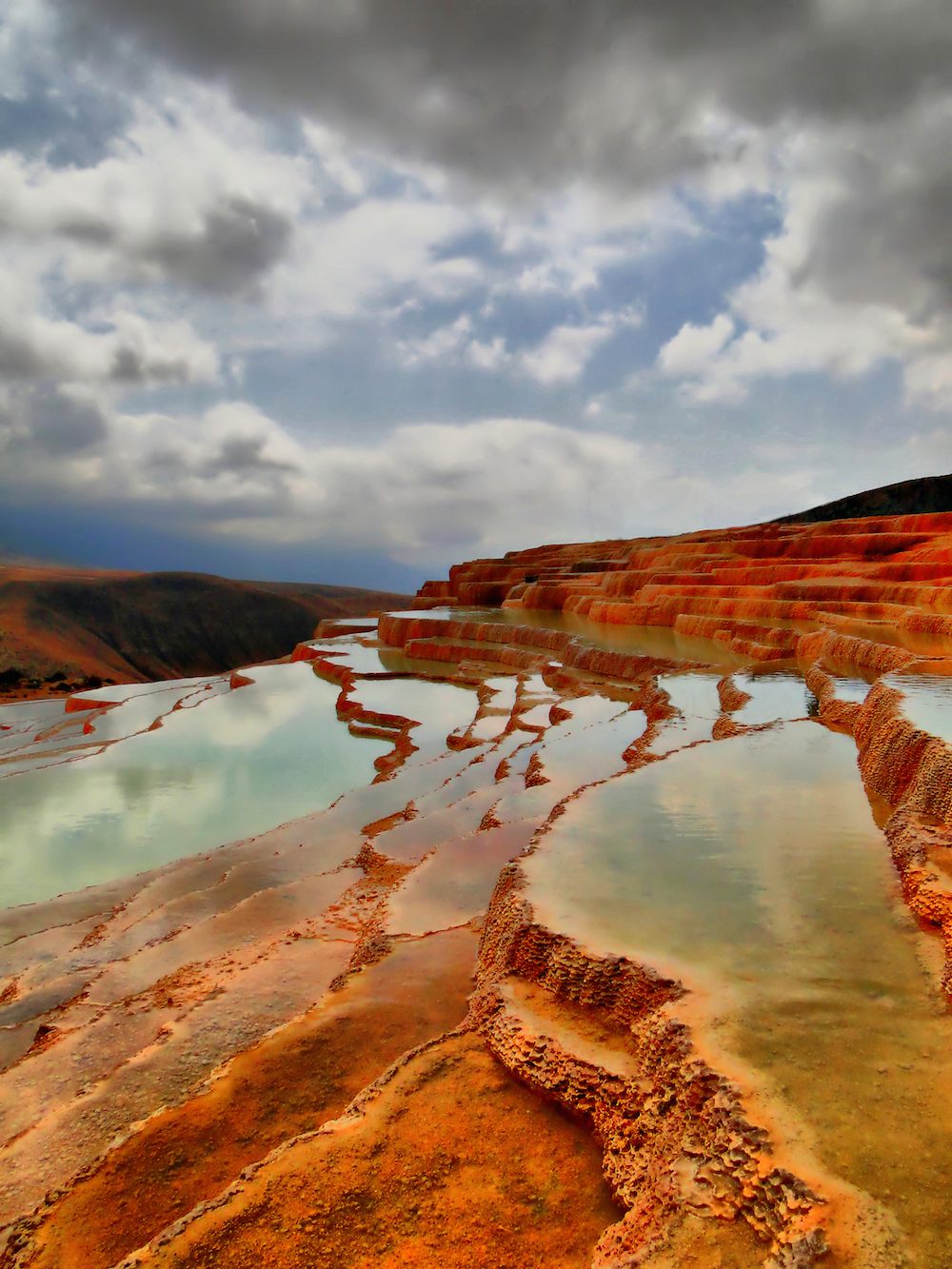 Badab-e Surt in 2010 (photograph by Samaee/Wikimedia)
Badab-e Surt in 2010 (photograph by Samaee/Wikimedia)
WHITE WATER TERRACE
Shangri-La, China
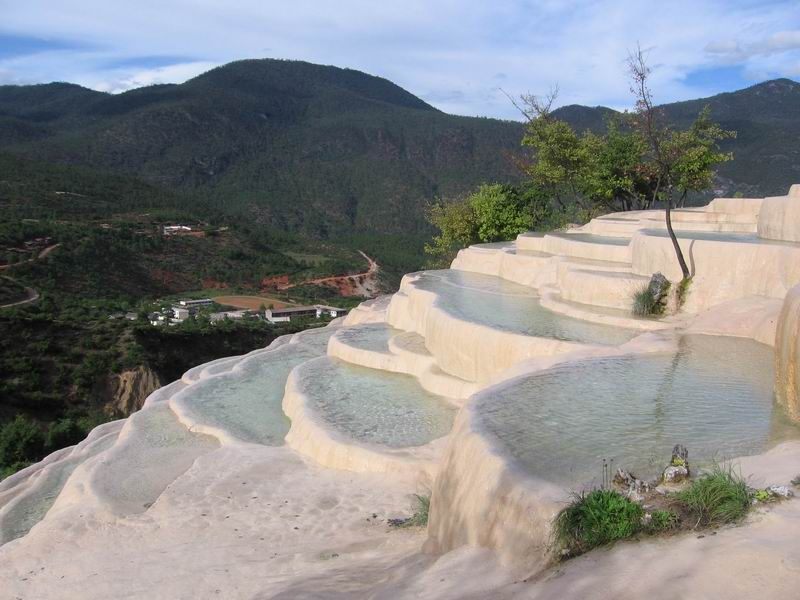 White Water Terraces in China (photograph by Ariel Steiner/Wikimedia)
White Water Terraces in China (photograph by Ariel Steiner/Wikimedia)
The White Water Terraces near the village of Shangri-La in China certainly resemble a mythical paradise. The terraces at the bottom of the Haba Snow Mountains are some of the country’s largest, with areas of flowing water and others of gentle pools rippling in the white travertine.
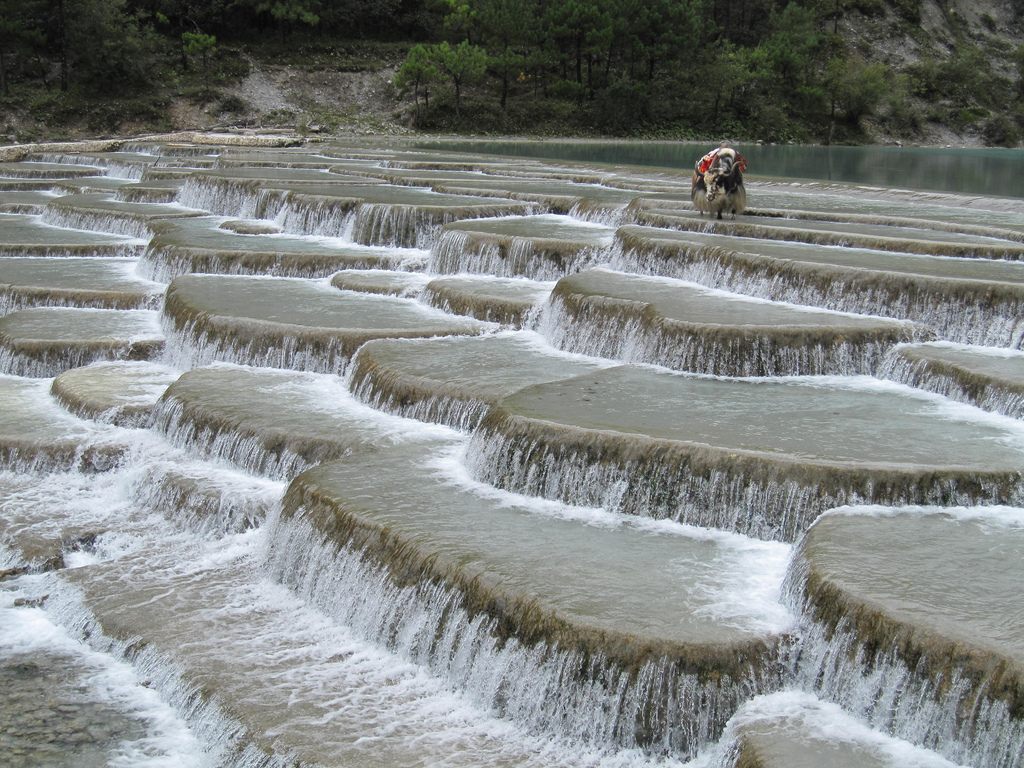 White Water Terrace in 2009 (photograph by cammy8888/Flickr)
White Water Terrace in 2009 (photograph by cammy8888/Flickr)
TERME DI SATURNIA
Saturnia, Italy
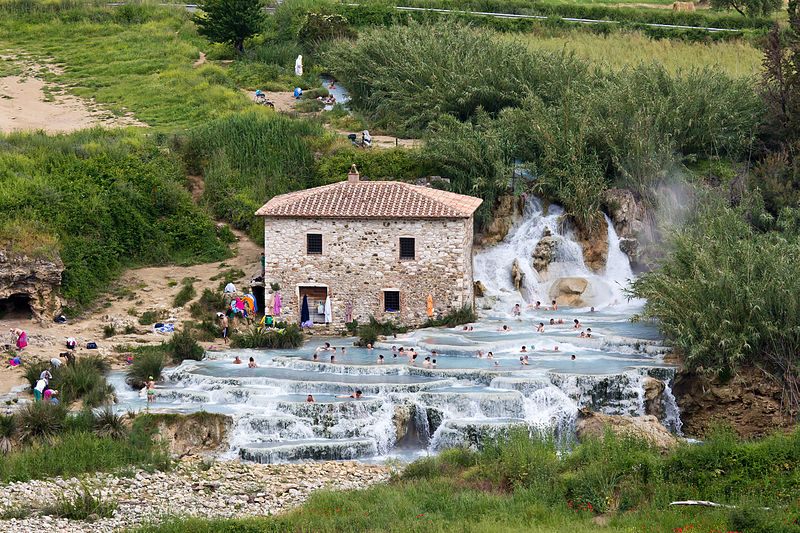 Terme di Saturnia, Italy (photograph by Raimond Spekking/Wikimedia)
Terme di Saturnia, Italy (photograph by Raimond Spekking/Wikimedia)
The Terme di Saturnia near Saturnia, Italy, is more accessible than the other terraces. With sulfurous water flowing at temperatures up to 100 degrees Fahrenheit, the terraces create welcoming geothermal hot tubs. Although Saturnia has a population under 300, the terraced spring with its appealing pools still draw regular visitors for a therapeutic swim.
 Terme di Saturnia in 2013 (photograph by Diana Corridori/Flickr)
Terme di Saturnia in 2013 (photograph by Diana Corridori/Flickr)
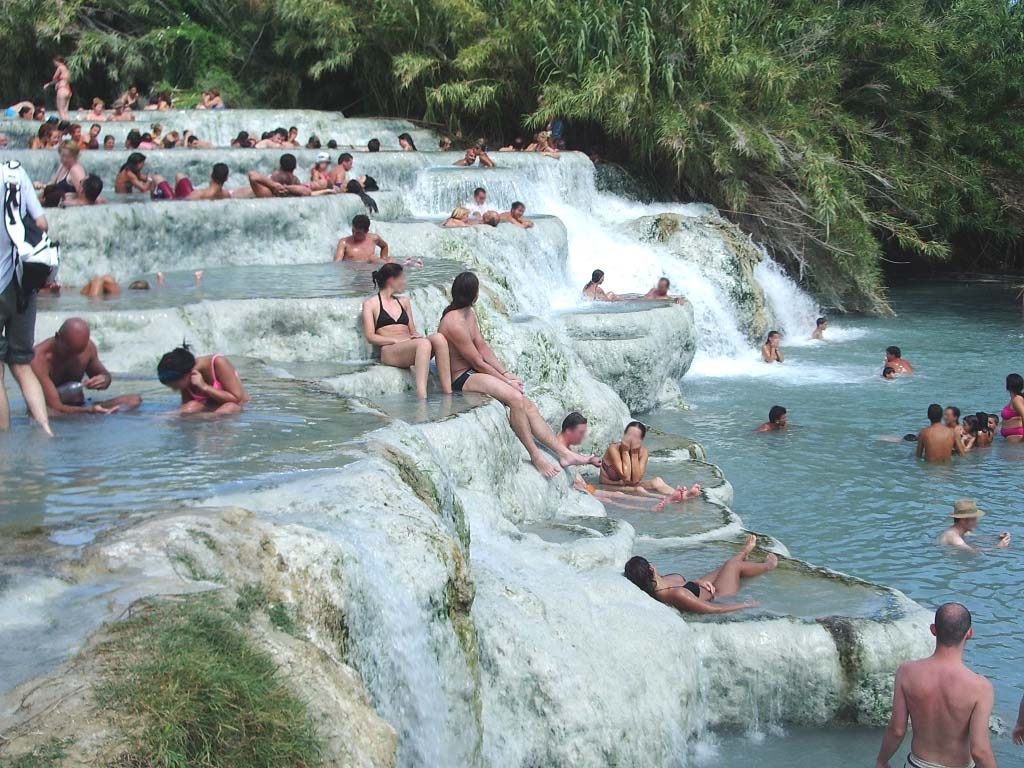 Terme di Saturnia in 2005 (photograph by Rutger Vos/Flickr)
Terme di Saturnia in 2005 (photograph by Rutger Vos/Flickr)
ŠKOCJAN CAVES
Divača, Slovenia
 Škocjan Caves, Slovenia. (photograph by Husond/Wikimedia)
Škocjan Caves, Slovenia. (photograph by Husond/Wikimedia)
Below the surface, a similar geological feature known as rimstone can be found in caves, such as the Škocjan Caves of Slovenia. Like the terraces on the surface, rimstone is shaped by minerals like calcite flowing constantly over time.
PINK AND WHITE TERRACES
Waimangu, New Zealand
 Pink & White Terraces in New Zealand, illustrated in 1867 by E. Saute (via British Library)
Pink & White Terraces in New Zealand, illustrated in 1867 by E. Saute (via British Library)
Finally, these terraces might seem peaceful, but they signal incredible geothermal activity. Lake Rotomahana in New Zealand was a 19th-century destination for its Pink and White Travertine Terraces. Then in 1886, Mount Tarawera erupted, and the volcano destroyed the terraces and killed over 100 people. Fragmented remains of the terraces were found in 2011 below the lake, but otherwise they’re just a memory. However the natural disaster did leave behind a new wonder: Frying Pan Lake in the Waimangu Volcanic Rift Valley, one of the largest hot springs in the world.













Follow us on Twitter to get the latest on the world's hidden wonders.
Like us on Facebook to get the latest on the world's hidden wonders.
Follow us on Twitter Like us on Facebook